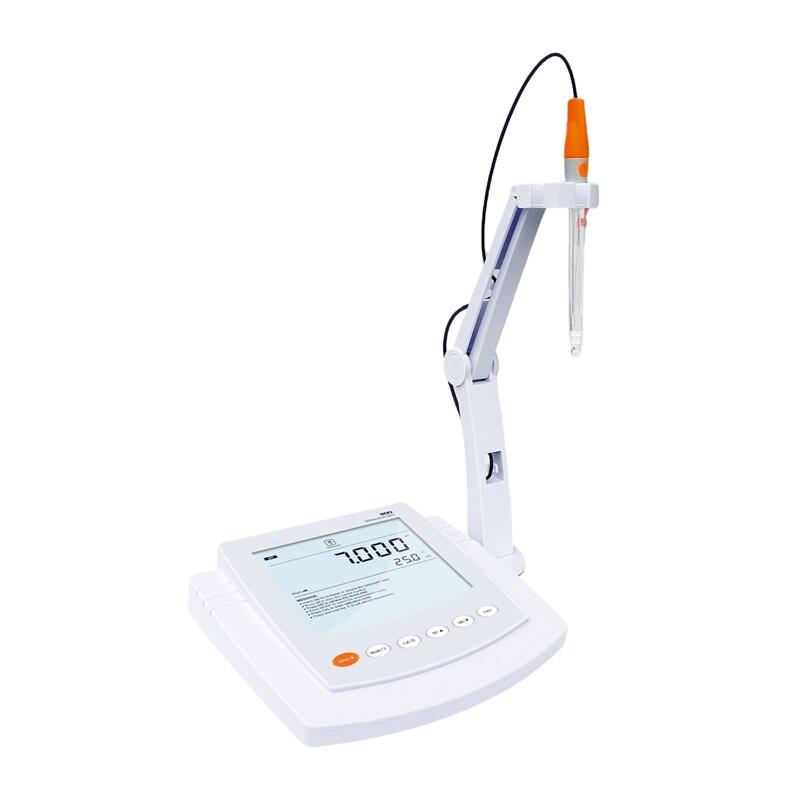Key Features to Consider When Choosing a Heating Block Reactor
Critical Temperature Range and Control Capabilities
Optimal Operating Ranges for Different Applications
Maintaining the optimal temperature range is crucial for various chemical processes to ensure high reaction yield and product quality. In pharmaceuticals, specific reactions often require narrow temperature conditions to prevent degradation of sensitive compounds. Similarly, polymer production involves precise temperature control to achieve desired molecular weights and structures. Fine chemicals also rely on exact temperature settings to optimize reaction pathways and avoid unwanted by-product formation. Studies have indicated that even slight fluctuations in temperature can lead to significant deviations in reaction outcomes, affecting both efficiency and quality. For instance, research in chemical engineering journals suggests that maintaining a stable temperature can increase yield by up to 15%. Thus, controlling temperature within these optimal ranges is essential to prevent issues such as thermal runaway or incomplete reactions.
Precision Control Systems in Modern Reactors
Modern reactors employ advanced precision control systems that are pivotal in maintaining ideal reaction conditions. These systems utilize digital controllers and feedback loops to constantly monitor and adjust temperature parameters accurately. Case studies demonstrate that implementing these precision control systems has significantly improved reaction outcomes, such as increased yields and reduced variability. For example, a manufacturing facility reported a 20% improvement in consistency after integrating digital controllers into their reactor systems. Automation plays a critical role in enhancing precision by minimizing human error and ensuring consistent operational parameters. Industry benchmarks reveal that automating control processes can enhance overall efficiency by up to 30%, showcasing the benefits of leveraging technology for improved chemical production.
Integration with BOD Testing Equipment
Heating block reactors can seamlessly integrate with BOD testing equipment to ensure precise temperature control, which is vital for accurate biological oxygen demand (BOD) testing. This integration is particularly beneficial in applications requiring consistent thermal environments to maintain testing reliability. For instance, laboratories have reported improved consistency in test results when utilizing integrated systems that synchronize heating with BOD testing procedures. The benefits include not only enhanced data integrity but also significant time savings, as synchronized systems reduce manual intervention and streamline testing processes. By maintaining precise temperature control, these integrated systems facilitate more reliable and efficient testing outcomes, enhancing the quality of environmental and biological assessments.
Clamp-on Band Heaters vs. Ceramic Heating Systems
Clamp-on band heaters and ceramic heating systems both offer distinct advantages when it comes to heating efficiency and functionality. Clamp-on band heaters are renowned for their flexibility and easy installation, making them ideal for applications that require uniform heating around cylindrical surfaces. They are widely used in industries for pipe heating and maintaining consistent temperatures. On the other hand, ceramic heating systems boast high thermal efficiency and lower energy consumption, making them suitable for applications where energy savings are paramount. Recent studies have illustrated that ceramic heaters can achieve up to 30% more energy savings compared to traditional heating methods. In scenarios where precise temperature control is critical, such as in laboratory settings or high-precision manufacturing, ceramic heating systems are often preferred due to their stable thermal output and energy-efficient performance.
Evaluating Heat-Up Rates and Stability
Evaluating heat-up rates and stability in heating systems involves using precise methodologies like temperature probes and data logging. These tools help in capturing accurate temperature changes over time, ensuring the heating system provides consistent results. Research has indicated that faster heat-up rates are crucial in research applications where time efficiency can significantly impact experimental outcomes. For example, rapid heat-up rates can increase throughput in thermal testing processes, enhancing productivity. Stability during the heating process plays a vital role in achieving consistent experimental results, as fluctuations can lead to variations in material properties or reaction yields. Therefore, the integration of stable heating systems is essential to maintain uninterrupted and uniform temperature conditions throughout the experimental phase.
Compatibility with Advanced Cooling Circulators
Ensuring compatibility between heating block reactors and advanced cooling circulators is beneficial for temperature-sensitive processes, as it enhances thermal management efficiency. Advanced cooling circulators help regulate and maintain precise temperature conditions, which is critical in applications like pharmaceutical testing or chemical synthesis where temperature control impacts product consistency and quality. Examples of successful integrations demonstrate improved thermal management capabilities, reducing the risk of overheating and ensuring the seamless operation of heating systems. Industry leaders have highlighted the importance of these systems in their operations, emphasizing how optimal temperature control has led to better outcomes and increased system reliability. Testimonials affirm that advanced heating and cooling systems can drive industry innovation by offering precise temperature control and enhanced thermal efficiency.
Stainless Steel vs. Glass Reactor Vessels
When selecting materials for reactor vessels, stainless steel and glass are the prevalent choices due to their unique properties. Stainless steel is highly valued for its excellent thermal and chemical resistance, which makes it ideal for high-pressure applications. This material is highly durable, resistant to wear even under extreme conditions, and conforms to industry standards like ASME, ensuring safety and longevity. Glass, on the other hand, is preferred in low-temperature and pressure applications primarily for its transparency, which aids in visual monitoring of the process inside the reactor. Its inertness and resistance to many acids make it suitable for various synthesis processes. While both materials have merits, understanding their limitations in terms of wear and resistance is vital for choosing the right reactor vessel for specific applications.
Corrosion Resistance for Long-Term Use
Corrosion resistance is a critical factor when considering the long-term use of reactor materials. Corrosion can compromise safety and performance, leading to costly repairs and downtime. Studies indicate that materials like stainless steel have a low corrosion rate, particularly alloys such as SS316, which contains molybdenum that enhances resistance to chloride corrosion. Coatings and treatments, such as passivation, can significantly bolster a material's corrosion resistance. For instance, applying a specialized coating to stainless steel reactors extends their life span and reliability, reducing the overall cost of ownership. By selecting the right materials and treatments, industries can maintain reactor integrity and safety over prolonged use, even in corrosive environments.
High-Pressure Reactor Safety Standards
Safety standards, such as those set by the American Society of Mechanical Engineers (ASME), are essential in the operation of high-pressure reactors. These regulations guide the design and operation, ensuring reactors can withstand high pressure safely. Designing for pressure safety involves understanding historical examples of incidents and near-misses to implement best practices in reactor construction and material selection. ASME and other standards emphasize robust construction, pressure-relief mechanisms, and regular inspections. Compliance with these standards not only enhances safety but also optimizes reactor performance, helping to avoid potential hazards and ensuring operations run smoothly. Following these regulations is paramount for industries aiming for efficient and safe chemical processing.
Laboratory COD Analyzer 5B-3A: Integrated Thermal Management
The Laboratory COD Analyzer 5B-3A stands out with its comprehensive features, particularly its integrated thermal management capabilities. This analyzer is designed to accurately measure Chemical Oxygen Demand (COD) in various water types, including surface water and industrial wastewater. It offers the convenience of storing 1000 sets of data and automatically prints results, showcasing its operational efficiency. For instance, a lab in a wastewater treatment facility significantly improved its analytical throughput by utilizing the data management and thermal accuracy of this COD analyzer, demonstrating its value in rigorous laboratory settings.
The integrated colorimeter and digester play a crucial role in maintaining precise thermal management, which is essential for conducting accurate COD tests. Precision in thermal management ensures that the samples reach the exact temperatures required for chemical reactions without fluctuation, thus ensuring reliable and repeatable results. This is vital not only for the integrity of the tests but also for compliance with environmental standards and regulations, where accurate COD readings are necessary for assessment and reporting.
Benchtop Multiparameter Water Quality Meter LH-900: Multi-Zone Control
The Benchtop Multiparameter Water Quality Meter LH-900 excels with its sophisticated multi-zone control capabilities, making it indispensable in research applications. It allows simultaneous calibration and measurement of various parameters such as pH, conductivity, and dissolved oxygen, making it possible to gather comprehensive water quality data in a single session. This capability is particularly beneficial in fields requiring rapid adaptability to varying test conditions, such as environmental monitoring or pharmaceutical research laboratories.
Efficient multi-zone control supports diverse environmental conditions, allowing laboratories to maintain flexibility and accuracy when testing different water samples. This precision enhances the reliability of data collected, vital for ensuring compliance with international water quality standards and improving decision-making in environmental management. The impact of such efficient control is evident in how research facilities manage to streamline their workflows, reducing time spent on manual recalibrations and increasing the throughput and confidence in their test results.
Nuclear-Grade Safety Protocols in Heating Blocks
In high-stakes environments, such as laboratories and industrial settings, nuclear-grade safety protocols in heating blocks play a crucial role in ensuring safety and preventing hazards. These protocols are designed to withstand extreme conditions, including thermal and pressure variations, thereby safeguarding personnel and equipment. Manufacturers face significant compliance challenges as they strive to meet these stringent safety standards. Overcoming these challenges involves rigorous testing, thorough documentation, and continuous improvement in product design. Experts in the industry, such as Dr. James Anderson from the International Safety Association, suggest that future trends in safety compliance will increasingly focus on automated safety checks and the integration of AI technologies to enhance monitoring and response systems.
PED and ASME Standards for Industrial Use
The PED (Pressure Equipment Directive) and ASME (American Society of Mechanical Engineers) standards play an integral role in the production and reliability of industrial heating solutions. These standards ensure that devices meet specific safety and pressure containment requirements, thereby guaranteeing product reliability and user safety. Adherence to these standards impacts product longevity and market trust, with companies often showcasing their compliance through certifications. One notable example is Global Heating Tech, which saw a 20% increase in market share after successfully implementing PED and ASME guidelines. Obtaining such certifications not only validates a company's commitment to quality but also enhances its market competitiveness, making it a preferred choice for discerning clients.
FAQ
What are the benefits of precision control systems in chemical reactors?
Precision control systems ensure that the temperature and other reaction conditions are maintained accurately, which leads to improved reaction outcomes, like higher yields and reduced variability.
How do ceramic heating systems compare to clamp-on band heaters?
Ceramic heating systems offer high thermal efficiency and energy savings, whereas clamp-on band heaters are known for their flexibility and easy installation, ideal for cylindrical surfaces.
Why is corrosion resistance important in reactor materials?
Corrosion resistance ensures the longevity and safety of reactor materials, preventing costly repairs and downtime associated with material degradation.
What role do PED and ASME standards play in industrial heating solutions?
These standards ensure that industrial heating solutions meet specific safety and pressure requirements, enhancing product reliability and user safety.



